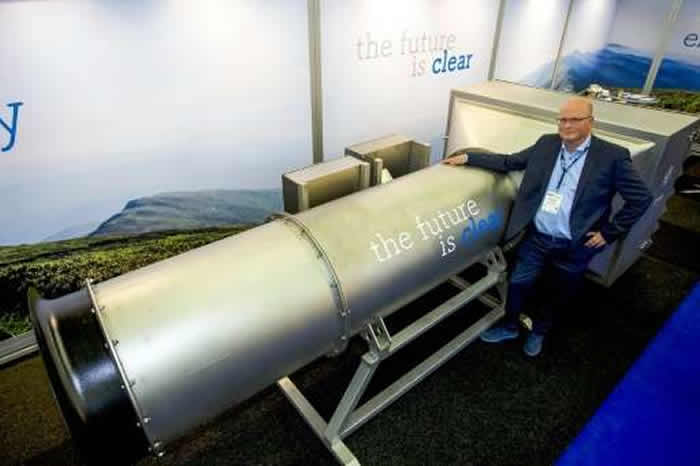The world’s first giant outside air vacuum cleaner, is what Dutch inventors are calling their latest work- a large purifying system intended to filter out toxic tiny particles from the atmosphere surrounding the machine.
A spokesman for the Envinity Group which unveiled the system in Amsterdam, Henk Boersen said: “It’s a large industrial filter about eight meters (yards) long, made of steel… placed basically on top of buildings and it works like a big vacuum cleaner.”
The system is said to be able to suck in air from a 300 meter radius, and from up to 7 kilometer (over 4 miles) upwards. It can treat some 800,000m3 of air an hour, filtering out 100% of fine particles and 95% of ultra-fine particles, the company said, referring to tests carried out by the Energy Research Center of the Netherlands (ECN) on its prototype.”
A large column of air will pass through the filter and come out clear,” Boersen told AFP, speaking on the sidelines of a major two-day offshore energy conference in Amsterdam.
Fine particles are caused by emissions from burning wood and other fuels as well as industrial combustion, and have ‘adverse effects on health,’ according to the European Environment Agency.
About 90% of EU residents are exposed to levels of such particles, which can be carcinogenic, above those recommended by the World Health Organization.
As for ultra-fine particles, they are released by emissions from vehicles as well as aeroplanes, according to Envinity, and can damage the nervous system, including brain cells, and also cause infections.
Boersen said Governments, businesses and airports are already interested in the project.
Last month another air-purifying system called the ‘Smog Free Tower’ was installed in Beijing and launched by the Dutch artist Daan Roosegaarde.
In a statement Studio Roosegaarde said; using patented ozone-free ion technology, it can clean up to 30,000m3 of air an hour as it blows past the tower, collecting more than 75% of the harmful particles.
More information at Phys.org



Comments are closed, but trackbacks and pingbacks are open.